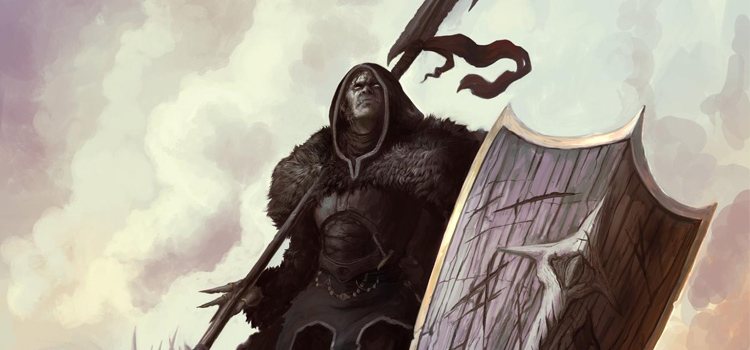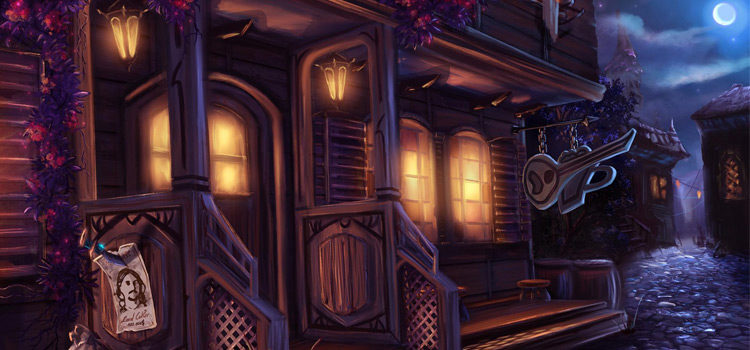College Of Swords Bard Guide: 5e Build Ideas And Optimizations
This post may contain affiliate links. If you buy something we may get a small commission at no extra cost to you. (Learn more).
For bards whose rapiers cut as deep as their wit, the College of Swords is all about how you wield your blade.
As a Swords bard, your sword is both a deadly weapon and an instrument of entertainment. Which you can use to deal even more damage to your enemies, boost your defense, and even increase your speed.
This guide to the College of Swords from Xanathar’s Guide to Everything includes tips on roleplaying the features of this subclass to deliver killing blows with panache.
Assuming that you’ve chosen the College of Swords, I’ll go through each feature and outline how you can make the most of it, as well as some suggestions for roleplay.
When you’re through, there will be no question that you studied the blade.
College of Swords Overview
The College of Swords is designed with an offensive play style in mind and is a good choice if you want to play a very fancy melee blademaster.
This subclass’s Blade Flourish feature expand your options in battle and allow for some really clever strategizing if you’re into that. And the Defensive Flourish in particular may just save your life.
However, this college doesn’t tie into the bard’s core abilities as well as some other subclasses do. Since the Blade Flourishes use Bardic Inspiration until you reach level 14.
Still, it can be maximized if you’re willing to get creative and consider multiclassing, and/or taking feats that support your build.
Bonus Proficiencies
More proficiencies are always useful. And this feature can help beef up your Armor Class (AC).
It also gives you a new weapon proficiency and adds a spellcasting focus.
In combination with the other features you get as a College of Swords bard, the Bonus Proficiencies give you more options in combat.
Here’s what you get:
When you join the College of Swords at 3rd level, you gain proficiency with medium armor and the scimitar. If you‘re proficient with a simple or martial melee weapon, you can use it as a spellcasting focus for your bard spells.
— Xanathar’s Guide to Everything
Maximizing Bonus Proficiencies
Medium armor is pretty good.
To maximize it, make sure that you have a Dexterity score of at least 14. This way you’ll be able to benefit from the full +2 to your AC.
If your Dexterity score is higher, you won’t be able to use this feature to add any more to your AC than the +2 granted by the armor.
But no need to fret! because there are other ways of increasing your AC: magic items, spells, and strategic use of cover on the battlefield. And the Defensive Flourish ability, which we’ll discuss in a later section.
The scimitar can be useful if you take the Two-Weapon Fighting Style (more on that in the next section!) and if you want to diversify the type of weapon damage you deal.
Were it not for the scimitar proficiency, your only slashing choices are handaxes and sickles. And those are fine. But the scimitar is more in line with the flavor of this class.
The weapon-as-spellcasting focus is handy (pun intended) because now you don’t have to worry about having a hand free to hold your musical instrument or access your component pouch.
Your sword is now the key to your spells, and you can cast to your heart’s content.
It’s also useful if you take the Two-Weapon fighting style, since you don’t have to fiddle around with dropping your sword and picking up your focus every turn.
Bonus Proficiencies Roleplay Tips
There are endless ways to roleplay gaining and using these abilities.
You joined the College of Swords and instantly got good.
To help you come up with ideas, think about how your character would answer the following questions:
- Why did you join the College of Swords?
- Did you expect to gain these proficiencies or are you surprised by them?
- Are you going to change your combat strategy and your entertainment routines now that you have these new proficiencies? Why/why not?
- Are you going to get new equipment because of these new proficiencies? What will it look like?
Look for opportunities to share your answers with your party; perhaps you’re ordering new armor and are describing to the seller what you want it to look like.
Or perhaps you’re practicing with your new scimitar and you find that using it just comes naturally to you and you look great while you’re doing it.
Don’t be shy about showing off a little bit. The most important thing is that you have fun.
Fighting Style
At 3rd level, you choose a Fighting Style: either Dueling or Two-Weapon Fighting.
These options solidify your role as a melee combatant and allow you to customize your character even more within this subclass.
Both choices have their merits:
At 3rd level, you adopt a style of fighting as your specialty. Choose one of the following options. You can’t take a Fighting Style option more than once, even if something in the game lets you choose again.
Dueling. When you are wielding a melee weapon in one hand and no other weapons, you gain a +2 bonus to damage rolls with that weapon.
Two-Weapon Fighting. When you engage in two-weapon fighting, you can add your ability modifier to the damage of the second attack.
— Xanathar’s Guide to Everything
Maximizing Fighting Style: Dueling
This Fighting Style option is my personal preference and recommendation, mainly because it gives you more flexibility with your bonus action and combines well with Extra Attack at 6th level.
But then again, I’m biased because I fence.
If you choose Dueling, the +2 damage is pretty sweet, especially when you get Extra Attack.
I’d recommend wielding a rapier not only because of its finesse property (you can use your Dexterity modifier for attack rolls and damage rolls instead of your Strength modifier), but for its 1d8 damage die, where it edges out the scimitar’s 1d6.
Since the requirement for the Dueling Fighting Style is that you are wielding a melee weapon in one hand and no other weapons, and your Bonus Proficiencies let you use your weapon as a spellcasting focus, your other hand is now free.
I’d recommend getting proficiency with shields. Which you can do by multiclassing into a class that gives shield proficiency, or by taking the “Moderately Armored” feat.
If you’re multiclassing to get proficiency with shields, your options are:
- Barbarian
- Cleric
- Druid (note that the Player’s Handbook states that druids won’t wear metal armor or use metal shields)
- Fighter
- Paladin
- Ranger
Of these choices, I’d recommend fighter or paladin.
Fighter lets you choose an additional Fighting Style (you can’t take Dueling again) and I’d recommend choosing Defense for the +1 AC bonus. The fighter also gains Second Wind, which you can use to heal yourself in a pinch. If you stick around in fighter for two levels, you gain Action Surge, which means you can take one additional action per short rest.
Aside from the shield proficiency, a couple of levels in paladin gives you Divine Sense and Lay on Hands at 1st level, and Fighting Style, Spellcasting, and Divine Smite at 2nd level.
The paladin class has the added benefit of using your Charisma modifier for some of its features, which is great for you as a bard. Divine Sense and Lay on Hands are definitely useful. But it’s the Fighting Style and Spellcasting that really support your Swords bard build.
I’d recommend taking Defense as a Fighting Style.
In terms of spells, you have access to the spells searing smite, thunderous smite, wrathful smite, and the ability Divine Smite, which expends a spell slot but isn’t a spell.
I’m not going to go through all of them, but basically the smiting spells deal extra damage and have the potential to cause a debilitating or otherwise inconvenient effects for your unlucky target.
Divine Smite in particular is great because it doesn’t take an action or a bonus action—it’s just something you can do as long as you have the spell slots for it. Which increases your damage output considerably.
And best of all, even if you go back to progressing as a bard, you can use the spell slots you have from being a bard to use Divine Smite. Which at a high enough level can deal up to 5d8 extra damage.
If you don’t want to multiclass and aren’t interested in getting proficiency with shields, but are still concerned about taking hits in melee combat, consider taking the “Defensive Duelist” feat.
It allows you to use your reaction to add your proficiency bonus to your AC.
You can also use the Defensive Flourish Blade Flourish option, which will be discussed later.
Maximizing Fighting Style: Two-Weapon Fighting
Normally when you engage in Two-Weapon Fighting, you play by the basic rules.
But if you choose Two Weapon Fighting as your Fighting Style, you get to add your ability modifier to the damage of the second attack.
Mathematically speaking, Two-Weapon Fighting has a higher potential damage output than Dueling on its own.
If you take this Fighting Style, you’ve conveniently just gained proficiency with the scimitar. Which you should use along with your rapier. The damage increase is great and can pack a real punch if you increase your Dexterity, for a damage bonus of up to +5.
Even though you can’t wield a shield with this Fighting Style, you might also benefit from multiclassing. Though fighter would be better for you than paladin because the smiting spells take your bonus action, which you need for Two-Weapon Fighting, not to mention for Bardic Inspiration.
Again, I’d recommend taking the Defense Fighting Style if you do choose to multiclass.
Since Two-Weapon Fighting requires your bonus action to make the attack with the second weapon, you’ll have to be strategic about when you use it to make that second attack vs. when to use it to give Bardic Inspiration to an ally, or when to use it for a spell.
Communicate with your party and decide what would be the best strategic use of it.
Fighting Style Roleplay Tips
Think of your fighting style like your signature as a College of Swords bard.
Which style suits your character, and any would they want to choose one over the other?
When you want to roleplay your character using their Fighting Style, think about the following questions and use them as ideas for roleplay:
- Imagine that you are in a fight. How would someone watching from afar be able to watch that fight and know that you’re involved, despite not being able to see your face?
- What is your posture like?
- Do you respect your opponents? How does your fighting style communicate that?
- Do you care for your weapons, or are they just a means to an end?
- How did you learn to fight like that?
- Is there anything different about how you wield your weapon when fighting vs. when you’re entertaining?
When you’re roleplaying, describe your character’s movements and think about what a spectator could learn about your character’s personality, mood, and values by watching them wield their weapon.
Blade Flourish
I love Blade Flourish.
It’s the defining feature of this subclass. And I think what I like most about it is that the mechanics help envision the flourish itself, which is helpful for roleplay.
Blade Flourish guarantees a boost to your speed. And if you hit you can deal extra damage and dish out a handy effect in exchange for a use of Bardic Inspiration. Here are the goods:
Let’s go through each option one-by-one and suggest how to maximize each option.
Remember that your speed increases by 10 feet whenever you take the Attack action on your turn; you don’t need to expend a use of Bardic Inspiration to benefit from that aspect of it. It’s only the Blade Flourish options that require Bardic Inspiration.
Also, using this feature doesn’t cost a bonus action. It’s just something you can do.
Maximizing Blade Flourish: Defensive Flourish
This option is the most useful of the three.
It’s a little chaotic in that you might end up with an enormous boost to your AC if you roll high on the Bardic Inspiration die, or you might be unlucky and not roll so well.
But even so, sometimes 1 is enough to make the difference between an attack roll hitting you or missing you.
Since you’ll likely be in melee combat, you’ll have a lot of opportunity to use this.
But you only have as many uses of this feature (until you reach level 14, which we’ll get to) as you do Bardic Inspiration and you might need to share that with your allies.
So you can’t just spam this feature on every turn, even though it is extremely tempting.
I’d save this for a fight where there are a lot of enemies. Because if you use it when your party is only fighting a couple of bad guys, you might not get attacked at all. Which is fine—good, even—but it will feel like you wasted its use.
It’s a lot more satisfying to be attacked and watch the attack miss because of the AC boost from this flourish.
Maximizing Blade Flourish: Slashing Flourish
You’ll probably use this option less often than the other two.
Honestly, it’s not the best use of your Bardic Inspiration when you could be using it to help an ally with their attack roll or saving throw.
If you want to use this option, I’d suggest waiting until the very end of combat when your enemies are on their last legs and then you can fell two at once.
If you took Two-Weapon Fighting, that makes this Blade Flourish option slightly more attractive, since you can use it to maximize the damage of the second attack, where you’re already adding your ability modifier.
Maximizing Blade Flourish: Mobile Flourish
This is fun because all you have to do is hit with your attack, and then you can essentially shove your target and they don’t even get the chance to make a saving throw against the effect—it just happens.
There are a few ways to maximize Mobile Flourish and it can be very helpful to your allies.
If you’re in melee combat and you have allies nearby, you can try to push the target in their direction so that your allies are within range and can attack on their next turns.
And if the target leaves your party members’ space, the target provokes an opportunity attack from your allies.
You can also use this as an opportunity to reposition the enemy. If you have party members who plan to cast area of effect spells, you could try to position the target into the spell’s range.
If you’re in a cramped area and there’s enemies clustered together, you could potentially use this Blade Flourish to push your target to within 5 feet of another enemy.
If the target doesn’t move on its turn, you might be able to use Slashing Flourish on it on your next turn.
Talk to your party during combat and figure out how pushing an enemy would help them best.
A little movement control can go a long way, it just requires some strategizing.
Blade Flourish Roleplay Tips
Roleplaying a Blade Flourish is all about how you wield your sword.
Are you an ostentatious character who loves to flex? Or are you more of a pragmatist and you learned Blade Flourish just to get even stronger?
Think about how you move the weapon, and answer these questions from your character’s perspective:
- Do you draw a particular shape in the air when you flourish your blade? What is it?
- If you’re fighting in a unique environment, does that have an effect on your weapon? For example, does it glint in the sunlight, or reflect the flames of a nearby fire?
- Does your Blade Flourish look different depending on which option you use? How?
- Since this ability expends Bardic Inspiration, do you do anything especially inspiring when you use it?
- Do you have a catchphrase that you say when you score a hit? If so, what is it?
Your description of your weapon need not be long in combat, but if you can give your table a sense of what your flourish looks like, it adds that extra bit of immersion to the fight and breaks up the number crunch.
Extra Attack
This simple, yet powerful addition to your repertoire is incredibly valuable.
It’s literally the ability to attack again:
Starting at 6th level, you can attack twice, instead of once, whenever you take the Attack action on your turn.
— Xanathar’s Guide to Everything
Maximizing Extra Attack
This ability pretty much maximizes itself. So it doesn’t require much thought on your part.
Stab once, then stab again.
If you took a couple of levels in fighter, you can pair this with your Action Surge and attack four times in one turn.
If you took Dueling, that’s a potential total +8 to damage rolls with your sword.
If you took Two-Weapon Fighting, you can do the same. But you’ll only be able to attack once with your second weapon, since you only have the one bonus action.
Extra Attack Roleplay Tips
Realistically, you don’t have to roleplay Extra Attack. Because you’ll be using it for the abilities already mentioned, which lend themselves to roleplay much better than this feature.
However, if you’d still like to roleplay your character learning it in your game’s universe, you can think about the following:
- How do you react to learning this new ability?
- Do you feel significantly more powerful now that you can attack twice?
- Does this new ability increase your confidence? How do you show that?
- Have you changed your technique or style now that you can attack twice?
If you multiclassed before getting Extra Attack, or if you intend to multiclass later, you can roleplay that as well:
- Why are you multiclassing? What does that look like in the story?
- Who have you met from your training in your second class?
- How has your second class influenced your strategy and approach as a College of Swords bard?
Roleplaying and having in-story reasons to multiclass can round out your character and make them more believable.
It’s also a great opportunity for your DM to tie it to plot elements in your campaign.
Master’s Flourish
This ability is truly a godsend and allows for true maximization of the Blade Flourish feature.
You can now use a Blade Flourish option without expending a use of Bardic Inspiration. Let’s dive into this deeper and see how it could be best used in a campaign.
Maximizing Master’s Flourish
A boon of enormous proportions, Master’s Flourish means that you have absolutely no reason to not use a Blade Flourish option on each of your turns.
To get the most out of this feature, you need to hit at least once per turn.
Max out that Dexterity score and if you multiclassed into fighter and took Action Surge, use it when you miss all your attacks and you need to try and hit again.
Even though Master’s Flourish is limited to 1d6, it doesn’t take your Bardic Inspiration, so you can go to town. Use it on Slashing Flourish and Mobile Flourish when it’s needed strategically.
But I’d use it on Defensive Flourish as much as possible.
The boost to AC, even if it’s only by 1, is so valuable. And even more so now that you’re not burning Bardic Inspiration to do it.
The 1d6 damage is just a nice little extra at this point.
Of course, you can still choose to expend a use of Bardic Inspiration to roll a heftier die. But I wouldn’t recommend it because the chance of rolling poorly isn’t worth expending a use of Bardic Inspiration when you simply don’t need to.
Master’s Flourish Roleplay Tips
To roleplay the Master’s Flourish, I’d hone in on the “Master” aspect of it.
At this point, you’re an expert swordsperson, the very best at the blade.
You’re flashy, you’re fancy, and you’re ferocious in battle.
What does that look like? Consider these questions:
- How have your skills with the sword improved?
- What have you learned from your previous fights, and how has that led to you being a better swordsperson?
- Have your flourishes changed? Have you made them even fancier, or now is it just a flick of your wrist for an effortless look?
A Note on Ability Scores
Usually, bards focus on increasing their Charisma scores. Which you should still do.
But Swords bards are also heavily reliant on Dexterity.
If you’re planning on playing a Swords bard, you should aim to keep both your Dexterity and Charisma scores high.
But if you want an optimized build, I’d spread your stats like this, from highest to lowest:
Dexterity: The attack rolls and damage rolls you make with your sword depend on your Dexterity score.
Charisma: Normally, this would be your highest stat as a bard, but it really should be equal or second only to your Dexterity score for this particular college.
Constitution: It’s worth investing in this stat because it’ll pay off in the form of better concentration saving throw results and more hit points as you gain levels.
Wisdom: Wisdom saving throws, especially against effects that target a character’s mind, are common. A decent Wisdom score often comes in handy.
Intelligence: You can take or leave this one. You have spells that can give you information that Intelligence-based skill checks would give you.
Strength: If your Dexterity is good, you won’t need this stat at all in combat. There are also fewer skills associated with this ability and effects that require Strength saving throws aren’t all that common.






